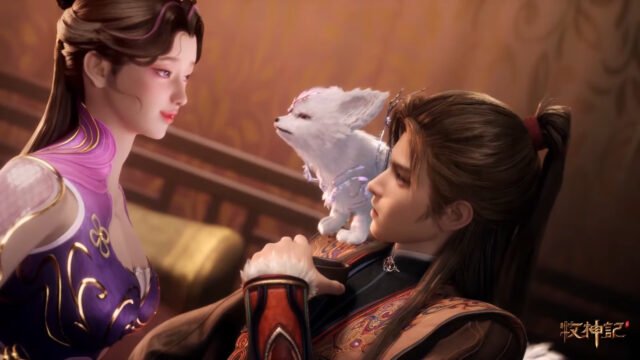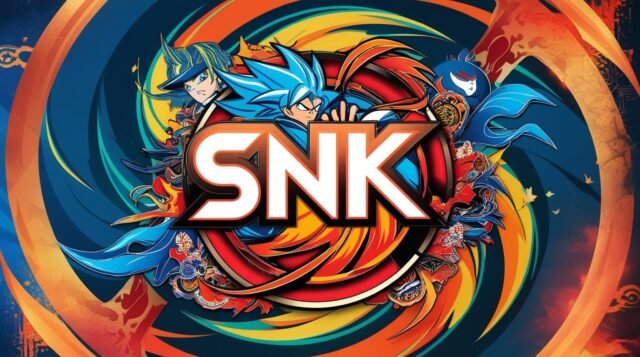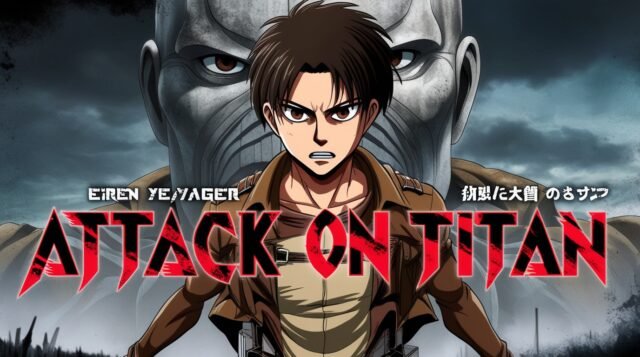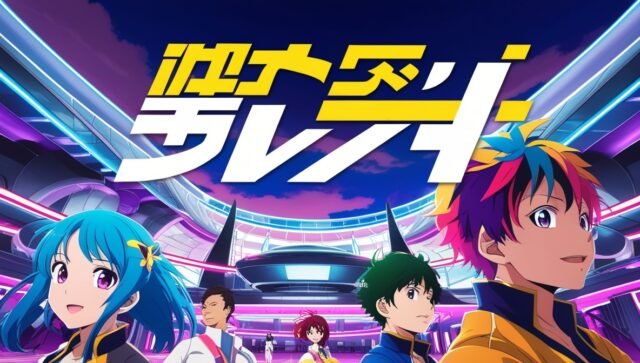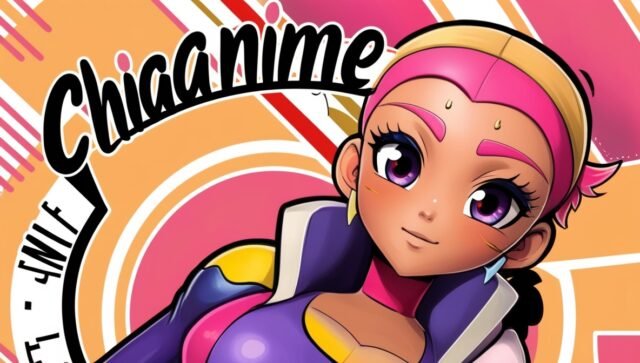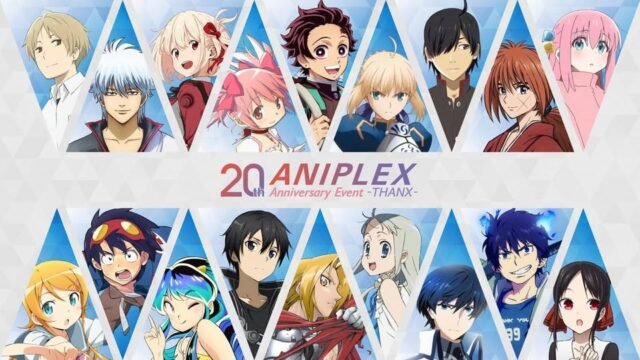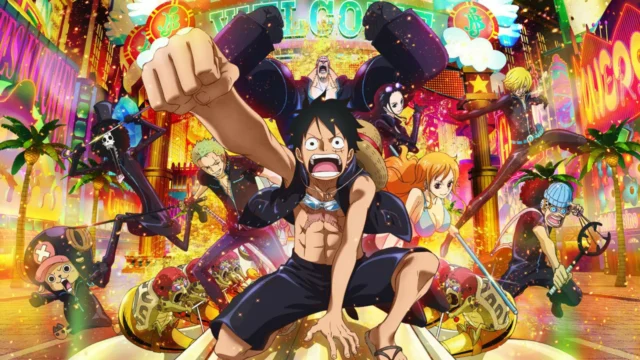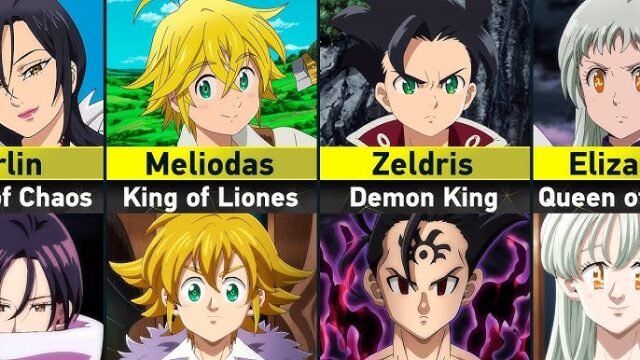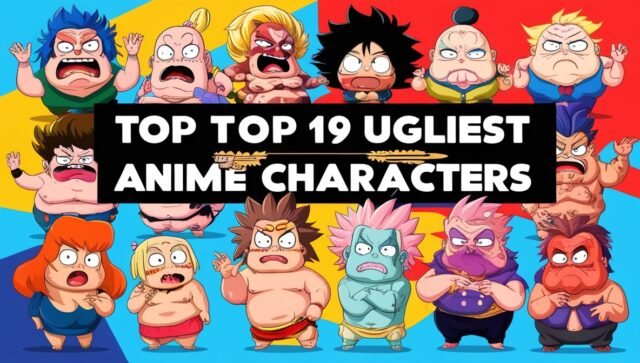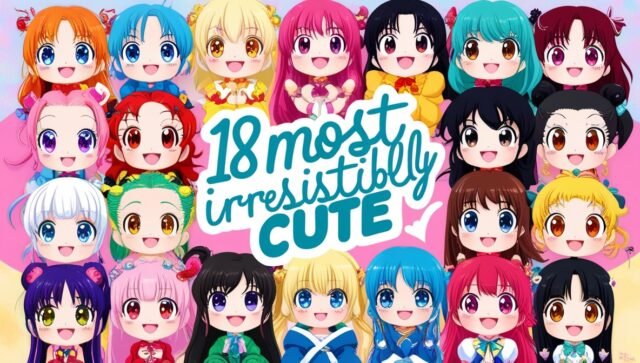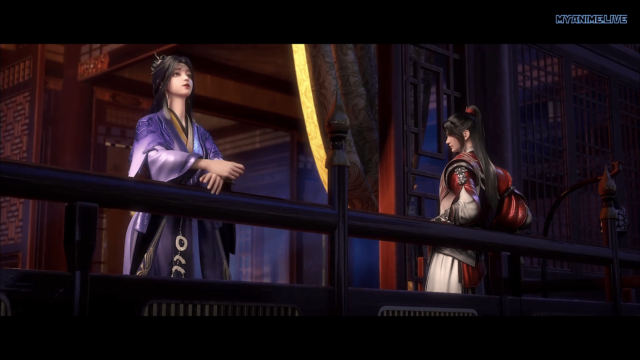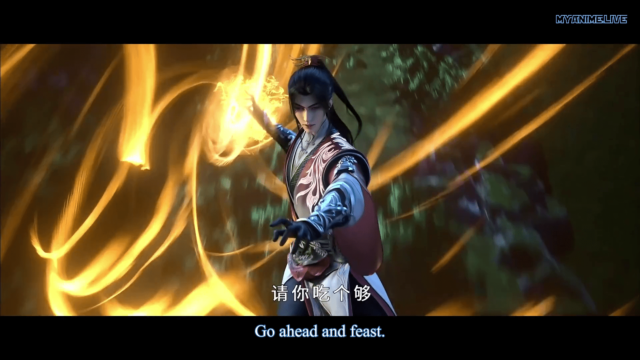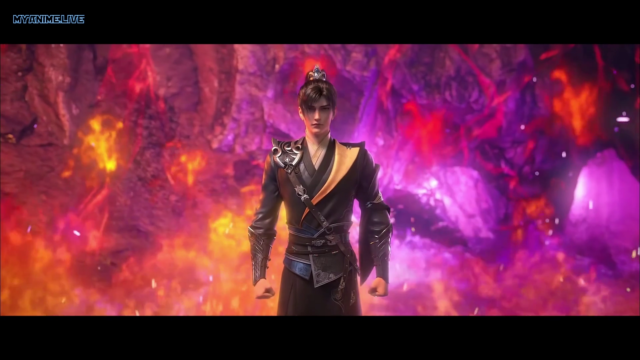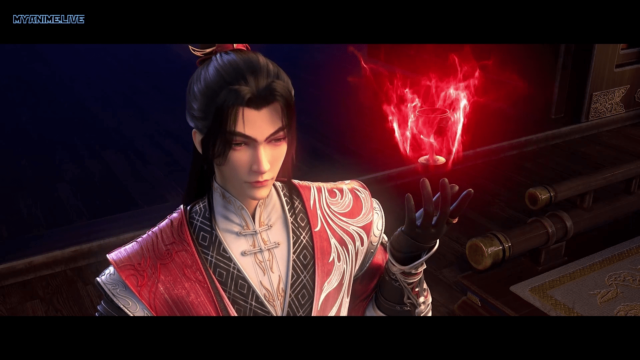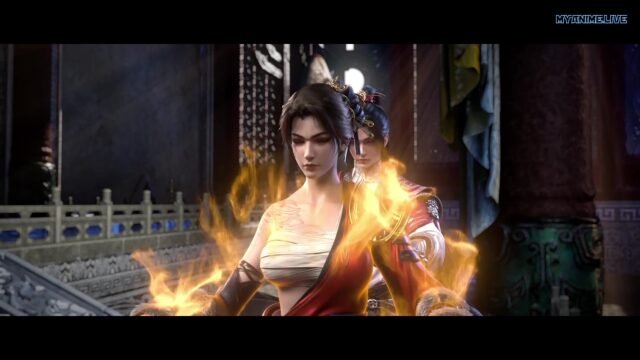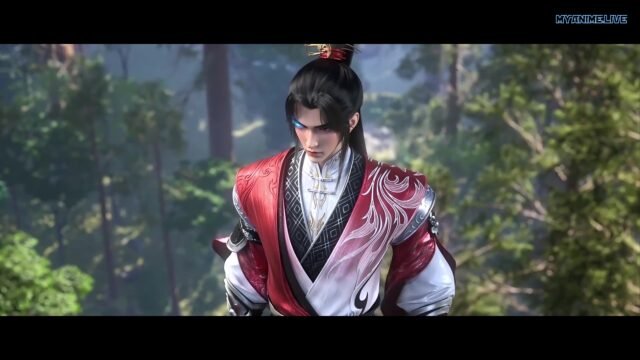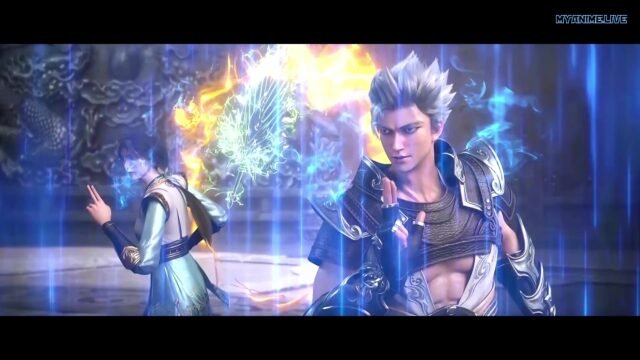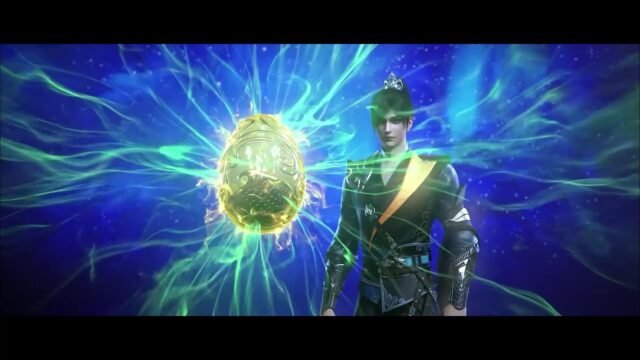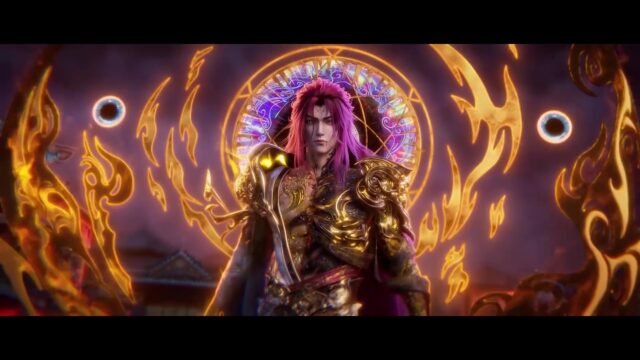Anime is a vast medium that captivates audiences worldwide, evolving into countless genres over the years. Among these genres, anime gore stands out due to its intense visuals and often shocking narratives. Some viewers are drawn to the intricate artistry, while others are captivated by the horror elements. This fascination raises the question: does anime gore represent art or is it merely horror?
The term ‘anime gore’ refers to animations that include graphic depictions of violence, bloodshed, and horror. These elements are often exaggerated for dramatic effect, creating visuals that can be both beautiful and terrifying. This duality is one reason people enjoy watching these series. Here are some reasons why audiences find anime gore intriguing:
- Artistic Expression: Many anime creators view gore as a form of art. They use blood and violence to convey deeper themes, emotions, or social commentary.
- Psychological Exploration: Anime gore often delves into the human psyche. It presents complex characters facing moral dilemmas, forcing viewers to confront their fears and biases.
- Adrenaline Rush: The shock value of gore can lead to an adrenaline rush. This excitement can hook viewers, making them eager for the next episode.
When examining anime gore, it is essential to look at its artistic qualities. While the bloodshed can be overwhelming, many series focus on visuals. The animation quality, character design, and backgrounds are crafted with precision, contributing to the overall aesthetic. For example, series like “Elfen Lied” and “Attack on Titan” combine stunning visuals and gruesome deaths to create a unique viewing experience. In these instances, gore becomes an art form rather than just a horrifying spectacle.
Another aspect of anime gore lies in its storytelling. It often tackles weighty themes such as loss, revenge, and the nature of humanity. These narratives can be compelling because they resonate with viewers on a personal level. Characters are put in extreme situations, forcing them to make tough choices. Such storytelling elicits emotional responses, turning viewers into invested witnesses of the characters’ journeys.
Despite the artistic merits, numerous criticisms surround anime gore. Many argue that it desensitizes viewers to real-world violence. This concern is valid; prolonged exposure to graphic content can impact perception and behavior. Hence, it’s crucial to approach these anime series with an open mind and a discerning eye. Consider these points:
- Viewer Sensitivity: Different individuals have varied thresholds for graphic content. One episode that captivates a fan might disturb someone else.
- Context Matters: Understanding the story’s context behind the gore can significantly shift a viewer’s perspective. It can transform a scene from mere shock value to a profound commentary.
Understanding whether anime gore is art or horror is subjective. Some fans believe that the visceral depictions are crucial for storytelling, while others see them as gratuitous. The truth often lies in the viewer’s response. Those who view anime gore as art may appreciate the beauty in the fright, while others may only see horror and violence. This polarizing effect drives discussions about morality, ethics, and artistic freedom.
It’s also interesting to note the cultural differences influencing the perception of anime gore. In Japan, depictions of violence in media often don’t carry the same weight as in Western cultures. For many Japanese creators, the blending of horror and fantasy is a longstanding tradition, deeply embedded in folklore and storytelling. This cultural context helps viewers understand why these themes are prevalent in anime.
As you explore anime gore, it’s advisable to approach with curiosity rather than apprehension. By doing so, you can uncover deeper messages woven into the narratives. Many viewers find value in dissecting these themes, analyzing how gore enriches storytelling, or even serves to critique society. Ultimately, the fascination with anime gore lies at the intersection of visceral imagery and profound storytelling, inviting both admiration and debate.
The world of anime gore is complex. It challenges viewers to confront their discomfort and explore the fine line between art and horror. Your own experiences with it may shape your understanding and enjoyment of this genre. Whether you view it as artistic expression or simply horror, anime gore undeniably holds a captivating place in the expansive anime universe.
The Impact of Violence in Anime on Viewer Perception
Anime, a popular form of entertainment, often showcases various themes, and one prominent aspect is violence. This portrayal of brutality can affect viewers in different ways, creating a spectrum of responses based on individual perception and cultural background. Often, these violent themes stir discussions about their psychological impact and social implications. Understanding how violence in anime influences viewer perception is crucial for a deeper engagement with the medium.
To explore this idea, it’s essential to consider different genres within anime that focus heavily on gore or violence. Shows like “Attack on Titan,” “Tokyo Ghoul,” and “Elfen Lied” explicitly utilize graphic imagery. For some, these portrayals may evoke fascination and curiosity, heightening emotional responses. Others may find them disturbing or unsettling, leading to adverse effects, particularly in younger audiences. How might this array of reactions shape overall viewer perception? Here are a few key impacts:
- Desensitization: Prolonged exposure to violent content can lead to a desensitization effect, making viewers less sensitive to real-life violence. This can skew their understanding of severe consequences in the real world.
- Normalization: Regularly viewing violent acts in anime can normalize aggressive behavior, particularly for younger viewers who might imitate what they see.
- Emotional engagement: Graphic scenes can also elicit strong emotional responses. The impact of sadness, fear, or shock can immerse viewers in the storyline, fostering a deeper connection to the characters.
Different audiences also interpret violence in varying ways based on cultural context. For instance, societies with a history of media censorship may react to gore in anime more critically than those where such content is normalized. In Japan, violent anime may simply be seen as another genre, while in Western countries, it can elicit debates about morality and responsibility. This cultural dichotomy affects how viewers perceive not only the anime itself but also the creators behind the work.
Moreover, psychological studies suggest a link between violent media and aggression in some individuals. This aspect brings up ethical questions about the responsibility of content creators. Here are a few points worth considering:
- Intent of creators: Many anime creators aim to tell complex stories, using violence to illustrate struggle, survival, and the darker aspects of humanity.
- Viewer age: The age of viewers matters greatly. Younger fans may not yet have the maturity to comprehend narratives that use violence strategically.
- Coping mechanisms: For some, engaging with violent anime can serve as a safe outlet for exploring fears and existential themes, providing an avenue for catharsis.
Viewer identity plays an essential role in processing anime’s violent content. Fans who identify with a particular character or are invested in a story may perceive violence differently. A character’s trauma might resonate with personal experiences, leading to empathy rather than disgust. This notion of empathy highlights the potential for violence in anime to foster deeper understanding rather than simple shock. As viewers navigate these complex emotions, they may engage in discussions that lead to critical thinking about violence in media and its causes.
Interestingly, some research indicates that viewers can sometimes find solace in the chaotic world of violent anime. Rather than leading to increased aggression, consumption of such content can help viewers release pent-up emotions or stress. This cathartic experience may explain the popularity of horror and gore-heavy anime among certain demographic groups.
In the end, the impact of violence in anime on viewer perception is multifaceted and highly influenced by individual experiences and cultural context. While some may argue that explicit content leads to negative outcomes, others may see it as an essential part of storytelling that allows for emotional depth. As you watch and engage with anime, it’s worthwhile to reflect on your responses to violence and consider how they might shape your perspectives.
Iconic Anime Gore Scenes That Defined a Genre
Anime gore has become a unique and defining element in the world of animated storytelling. It captivates audiences with its intense visuals and underlying themes that touch on the darker aspects of humanity. For fans of this genre, certain anime gore scenes stand out and have left a lasting impression. Let’s explore some of the most iconic scenes that have shaped the genre and what makes them noteworthy.
Tragic Realities Unveiled
One of the most memorable aspects of anime gore is how it delves into the tragic realities of life. Characters undergo intense transformations and face extreme consequences, creating an emotional connection with viewers. Here are a few iconic examples:
- Attack on Titan: The brutal reality of humanity’s struggle against Titans demonstrates horrific violence and loss, especially in shocking moments like the episode “The Weight of Chains.” Here, characters face unimaginable fates in gripping and graphic scenes.
- Tokyo Ghoul: Kaneki’s transformation from human to ghoul showcases the psychological impact of violence. The moment he devours his first victim is a striking example of the gory visuals enhanced by internal conflict.
- Elfen Lied: Known for its exceptional gore, “Elfen Lied” introduces Lucy and her deadly abilities. The opening scenes show her brutal escape and set the tone for the rest of the series, intertwining gore with emotional depth.
Shocking Visuals That Leave a Mark
The visual style of anime gore often amplifies its impact. Art styles differ, but the focus on vivid blood and dramatic expressions heightens emotional responses. Notable scenes include:
- Another: This horror series surprises viewers with unexpected deaths. The infamous classroom scene where a character meets a gruesome end is unforgettable, using blood and body horror masterfully.
- Paranoia Agent: The scene where Lil’ Slugger attacks creates an overwhelming sense of dread, incorporating surreal and disturbing visuals that blur the line between reality and insanity.
- Hellsing Ultimate: The graphic violence in this series is unapologetic. Alucard’s confrontations with rival vampires leave a trail of blood and destruction, cementing his status as an antihero.
Themes of Human Nature
Beyond the gore, these scenes often reflect profound themes related to human nature, fear, and morality. Some examples that delve into these themes include:
- Corpse Party: The psychological horror of this series reveals the consequences of bullying and the haunting nature of guilt. The intense gore serves as a reflection of the characters’ inner demons.
- Fate/Zero: This series explores the ethical dilemmas tied to the pursuit of power. The show tackles morality in battle scenes filled with blood and loss, questioning the price of ambition.
- Deadman Wonderland: It serves as a commentary on society’s brutality hidden behind bold visuals of gore and violence, raising questions about justice and the system.
Fan Reception and Cultural Impact
The reception of anime gore often sparks debates among fans about its artistic value versus its explicit nature. While some view it as a necessary element to convey raw emotions, others criticize it for being gratuitous. Yet, it undeniably pushes boundaries, influencing both creators and audiences alike.
Through these graphic images, fans gain insights into struggles and fears. This blend of captivating storytelling and stark visuals cultivates a passionate community that appreciates the aesthetic and thematic depth of anime gore.
Key Characteristics of Iconic Anime Gore
| Characteristic | Description |
|---|---|
| Art Style | Often exaggerated, with a focus on blood and visceral elements. |
| Character Development | Characters evolve in response to trauma, showcasing emotional depth. |
| Thematic Depth | The manga and anime often explore themes of morality, humanity, and fear. |
| Viewer Engagement | Creates a strong emotional reaction through shocking visuals and narratives. |
Iconic anime gore scenes capture the complexity of human emotion while pushing visual boundaries. By intertwining psychological elements with brutal aesthetics, these scenes resonate with viewers and define a genre that continues to evolve.
Comparing Anime Gore with Western Animation: A Cultural Perspective
Anime gore is a genre that delves into extreme violence and graphic depictions of death and injury, often pushing the boundaries of storytelling. This graphic narrative style is distinctly different from mainstream Western animation. While both realms feature human experiences, the cultural perspectives and audience perceptions play crucial roles in defining their thematic approaches. By exploring these differences, we can better understand how anime gore distinguishes itself in the broader animation landscape.
In Japan, anime is often viewed as a multifaceted art form. A variety of genres target different demographics, from children to adults. Within this context, anime gore can resonate deeply with themes of existentialism, morality, and the darker aspects of human nature. The visceral nature of anime gore stories often asks viewers to confront uncomfortable truths about life and death. Iconic series such as “Attack on Titan” or “Elfen Lied” showcase grotesque scenes to amplify their emotional impact, presenting violence as a natural element of their narratives.
In contrast, Western animation has historically leaned towards lighter themes. Animated films and shows—from Disney classics to contemporary Pixar solutions—typically aim for mass appeal, catering primarily to family audiences. While there are exceptions, traditional Western animation often avoids direct depictions of extreme violence. When violence occurs, it’s usually stylized or removed from the gritty realism presented in anime. For example, classic cartoons often participate in slapstick humor, where characters endure exaggerated harms but emerge unharmed, thus avoiding any lasting impact.
Comparative analysis reveals key distinctions in storytelling styles:
- Cultural Context: Japanese anime often ties graphic violence to philosophical questions and cultural fears, such as the trauma from World War II. Western animations mostly entertain, appealing to a broader, often younger audience.
- Artistic Expression: Anime gore tends to emphasize emotional extremes—showing pain, despair, and survival. Images become haunting impressions that stick with viewers. Western animations prioritize a light-hearted approach, portraying characters overcoming obstacles with humor and charm.
- Narrative Purpose: Gore in anime often serves to develop character arcs and advance plotlines significantly. In Western animation, violence is frequently used for comedic effects or as a tool for conflict resolution rather than profound exploration.
Consequently, the target audience impacts how these animated narratives are received. In Japan, viewers of anime gore may possess an acquired taste for violent storytelling, as they are conditioned to appreciate complexity and depth in characters. On the other hand, Western audiences, raised on bright, colorful animations, might shy away from graphic depictions, associating them with inappropriate content rather than artistic expression.
Furthermore, the reception of gore-related themes varies based on cultural values. Japanese culture often embraces darker themes, seeing them as opportunities to reflect on societal issues. In media like “Tokyo Ghoul” or “Parasyte,” the focus is not merely on gore but on the struggle between human instincts and morality. Characters are explored in their darkest moments, promoting character development through conflict.
In Western media, there is a tendency to shy away from deep discussions of violence, instead, opting for safety and positivity. This leads to a limited exploration of character complexities. Hence, while a show may include action or violence, it seldom explores the psychological ramifications of those actions as deeply as anime might. For example, consider the characters in “Avatar: The Last Airbender” versus those in “Hellsing.” Both feature conflicts and confrontations, yet the grappling with moral choices is presented with much greater nuance and depth in the latter.
Ultimately, the differences between anime gore and Western animation illustrate a broader cultural dialogue about violence, morality, and human experience. While some viewers might prefer the visceral and often unsettling nature of anime, others may find comfort in the traditional structures of Western storytelling. Each approach offers unique insights, encouraging diverse perspectives on complex themes that resonate across cultures.
The world of anime gore remains a controversial yet fascinating topic for many enthusiasts. Engaging with these contrasting styles not only broadens horizons but also deepens appreciation for what storytelling can achieve, regardless of cultural boundaries.
The Role of Gore in Character Development and Storytelling in Anime
Anime has a unique way of telling stories that captivates viewers around the world. One notable aspect of certain anime is the use of gore. While it may seem unsettling to some, gore plays a significant role in character development and storytelling. By examining the impact of gore, we can understand how it enhances the overall narrative and shapes characters in profound ways.
Gore in anime can serve multiple purposes, creating an emotional response that drives the narrative forward. Here are some of the ways it contributes to character development and storytelling:
- Shock Value: Graphic violence often provides an immediate emotional hit. This shock can draw viewers in, prompting them to invest in the characters’ arcs.
- Character Backstory: Many characters in horror and gore-filled anime have traumatic backgrounds. Graphic scenes can depict their struggles, making their motivations clearer and more relatable.
- Morality Dilemmas: Gore can illustrate the harsh realities of moral decisions. Characters may face situations where they must choose between survival and morality, which adds depth to their personality.
- Transformation: Characters often evolve after experiencing death and violence. This transformation can lead to new strengths or vulnerabilities that enrich their interactions.
- World Building: The use of gore can set the tone and atmosphere of a series. A gruesome environment often reflects the conflicts faced by characters, immersing the audience in the story.
One prominent example of gore utilized in character development is seen in the series “Attack on Titan.” The brutal world forces characters to confront death continuously. For instance, Eren Yeager’s evolution from a naive boy into a vengeful warrior is amplified by the graphic deaths he witnesses. Each loss reshapes Eren’s ideology and decisions, illustrating how gore can effectively transform a character.
Similarly, in “Elfen Lied,” the portrayal of violence is harrowing but instrumental. The protagonist, Lucy, suffers severe trauma that shapes her actions. Through moments of shocking violence, viewers gain insight into her tragic past, revealing why she reacts violently in the present. This deep connection between her history and her bloody path emphasizes the narrative power of gore.
Understanding the role of gore can lead us to explore the broader implications of violence in storytelling. Consider how it not only impacts individual characters but also creates a dialogue around themes like loss, revenge, and the fragility of life. Here’s a closer look at how these themes manifest in popular titles:
| Anime Title | Theme | Character Impact |
|---|---|---|
| Attack on Titan | Survival vs. Morality | Eren’s drive for vengeance leads to unexpected consequences. |
| Elfen Lied | Trauma and Identity | Lucy struggles with her violent instincts, reflecting her pain. |
| Tokyo Ghoul | Humanity and Monstrosity | Kaneki’s transformation questions what it means to be human. |
The effect of gore is not limited to character transformation alone. It fosters discussion among viewers regarding the human condition. For many, the extreme violence serves as a contrast to moments of tenderness, revealing the complexity of life. The interplay between these elements creates a captivating experience, drawing audiences deeper into the lives of the characters.
Moreover, when executed thoughtfully, gore enhances the themes of courage and resilience. Characters facing horrific situations often exhibit significant bravery. This leads to moments of courage being magnified amidst chaos, allowing viewers to connect with their journeys on a deeper level.
Gore in anime is not merely for shock or entertainment. Its presence engages viewers by adding layers to character development and storytelling. This visceral approach to narrative pushes boundaries, challenging audiences to ponder complex issues around life, death, and everything in between. Embracing these themes creates a richer experience, making anime resonate far beyond superficial storytelling.
Key Takeaway:
The fascination with anime gore is a complex phenomenon that delves deep into the intersection of art and horror, revealing much about viewer perception and storytelling in animation. One key takeaway from this exploration is that anime gore serves not just as shocking imagery but as a vital narrative tool. The genre often provides a visceral emotional release, allowing viewers to confront fear, trauma, or societal issues in a dramatic setting. This special connection between violence and art is part of what draws audiences in, making them question the boundaries of morality and human emotion.
The impact of violence in anime cannot be overstated. It influences how viewers interpret characters and their motivations. For many, witnessing extreme situations creates a deeper understanding of the characters’ struggles, vulnerabilities, and growth. Iconic anime gore scenes, such as those from “Attack on Titan” or “Elfen Lied,” have redefined what viewers expect from animation, effectively highlighting the blend of expression and horror that characterizes this genre. These sequences become iconic not solely for their shock factor but for their ability to weave emotional depth into the narrative.
When comparing anime gore with Western animation, one realizes the cultural differences in storytelling approaches. While Western productions may shy away from graphic violence, anime often embraces it to bravely convey complex themes. This divergence highlights different cultural perceptions of violence and its representation. In anime, gore often serves as a narrative amplifier, pushing characters to confront their own humanity or lack thereof.
Moreover, the use of gore in anime is intricately tied to character development. Through violence, characters can evolve, revealing their true selves in high-stakes situations. Thus, the gore transcends mere shock value, becoming a vessel for deeper narrative exploration. This storytelling strategy invites viewers to engage more than just visually; it compels them to reflect emotionally and intellectually on the characters and the world they inhabit.
The captivating allure of anime gore lies in its ability to function as both art and horror, shaping viewer perceptions while enhancing storytelling and character development. Understanding this duality is crucial for anyone looking to delve into the enchanting, albeit brutal, world of anime.
Conclusion
The world of anime gore presents a unique interplay between artistry and horror, captivating audiences with its vivid depictions of violence and emotional depth. This genre invites viewers to explore not just the gory visuals, but also the underlying themes and character developments that arise within these narratives. The stark contrast in how violence is portrayed in anime compared to Western animation further enhances this fascination, offering a distinct cultural lens through which audiences can experience storytelling.
Notable scenes in iconic anime showcase brutal, yet thought-provoking moments that leave a lasting impression on viewers. These scenes often reveal the raw humanity and vulnerability of characters, enriching the story and fostering a deeper connection with the audience. Each gruesome image serves a purpose, challenging viewers to confront their perceptions of violence and its impact.
As you continue to explore anime gore, consider how these elements intertwine to create a rich tapestry of experiences. The genre goes beyond mere shock value; it prompts reflection on morality, trauma, and resilience within character arcs. This narrative complexity elevates the horror aspect to a thought-provoking exploration of the human condition.
Whether you’re a seasoned anime fan or a curious newcomer, the allure of anime gore lies in its ability to blend horror with meaningful storytelling. Embrace the journey into this captivating sub-genre, and discover the powerful messages that await in the chaos of blood and bravery.


